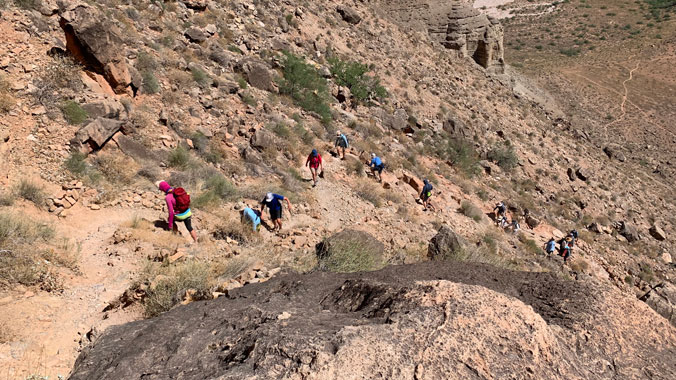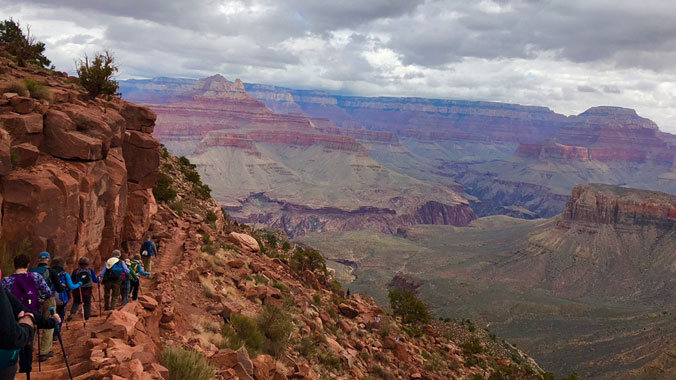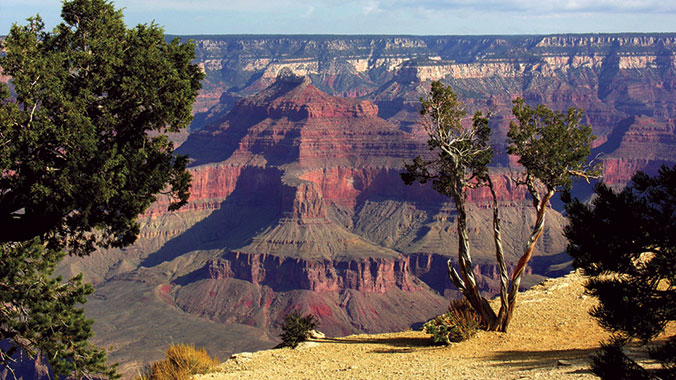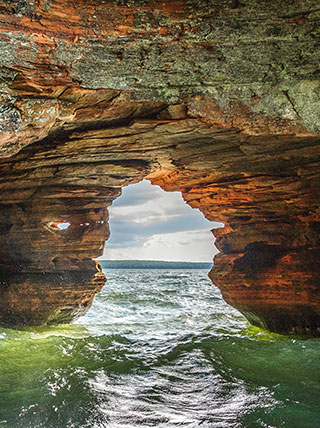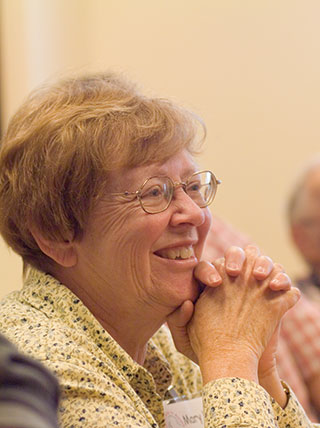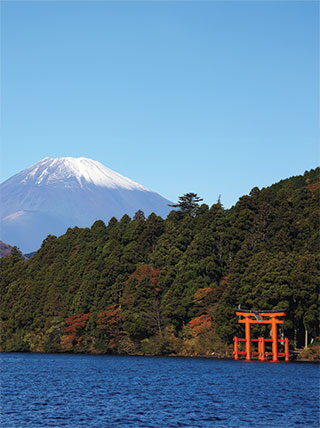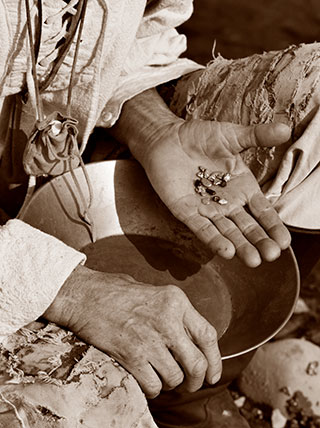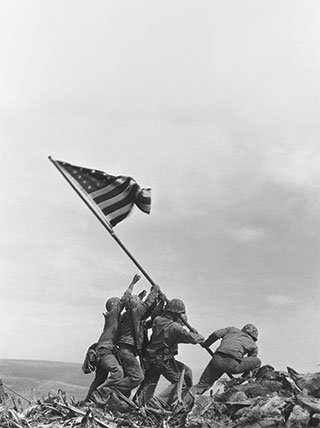Arizona
Hiking the Grand Canyon: Adventures On and Below the South Rim
Program No. 6112RJ
Gain a deeper understanding of the Grand Canyon as you join experts for hikes on and below the South Rim. Naturalists provide insight into the canyon’s epic natural and human histories.
Enroll with Confidence
We want your Road Scholar learning adventure to be something to look forward to—not worry about. Learn more
Protecting the Environment
We offset a portion of the emissions created by your travel. Learn more
Prefer to enroll or inquire by phone?
800-454-5768
Select your type of room
Price will update based on selection
Prices displayed below are based on per person,doubleoccupancy.
DATES
& starting prices
PRICES
DATES
& starting prices
PRICES
Not seeing the date you're looking for?
To be notified if dates of this program become available, click the button below.
6 days
5 nights
13 meals
5B 4L 4D
1
Check-in, Registration, Orientation, Welcome Dinner
Grand Canyon - South Rim
2
West Rim Trail Hike, Bright Angel Trail Hike
Grand Canyon - South Rim
3
Palisades of the Desert Hike, Desert View
Grand Canyon - South Rim
4
Red Mountain Volcano, Free Time
Grand Canyon - South Rim
5
South Kaibab Trail Hike to Cedar Ridge & Skeleton Point
Grand Canyon - South Rim
6
Program Concludes
Grand Canyon - South Rim
At a Glance
Hike through stands of pinyon-juniper and around yucca and agave, as you venture along and below the rim of the Grand Canyon. Travel back through geological time, with naturalists providing insights into the landscape’s epic natural and human histories. Descend below the canyon’s rim on the historic Bright Angel and South Kaibab Trails. See more of this natural wonder than you ever imagined, with hikes along the western rim viewpoints and others at some of the park’s eastern most points, Desert View Watchtower and the Palisades of the Desert.
Activity Level
Outdoor: Spirited
Hike 3-6 miles daily over uneven terrain, high steps, desert vegetation, rocky areas, elevation changes up to 1,200 feet. Elevations up to 7,000 feet.

Small Group
Love to learn and explore in a small-group setting? These adventures offer small, personal experiences with groups of 13 to 24 participants.
What You'll Learn
- Venture out on hikes on and below the rim of Grand Canyon National Park.
- Learn from experienced naturalists about an array of topics ranging from the surrounding landscapes to current park management issues.
- Enjoy an “off-the-beaten-path” hike at the Palisades of the Desert, the eastern Grand Canyon’s sherbet-colored cliffs with distant views of the historic Desert View Watchtower.
Featured Expert
All trip experts
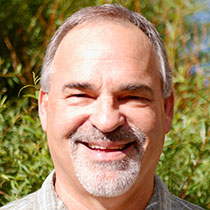
Mike Masek
Mike Masek is a wilderness skills instructor, herbalist and ethnobotanist living in Flagstaff, Ariz. In addition to his current work with Road Scholar, he is adjunct faculty at Northern Arizona University where he teaches traditional uses of native plants and outdoor survival skills. He also teaches programs at the National Parks and Coconino Community College. He has spent a lifetime exploring the canyons and deserts of the American Southwest and loves to share these treasures with others.
Please note: This expert may not be available for every date of this program.

Mike Masek
View biography
Mike Masek is a wilderness skills instructor, herbalist and ethnobotanist living in Flagstaff, Ariz. In addition to his current work with Road Scholar, he is adjunct faculty at Northern Arizona University where he teaches traditional uses of native plants and outdoor survival skills. He also teaches programs at the National Parks and Coconino Community College. He has spent a lifetime exploring the canyons and deserts of the American Southwest and loves to share these treasures with others.

Lisa Kearsley
View biography
Lisa Kearsley moved to Arizona in the 1980s to earn a master’s degree in biology at Northern Arizona University and, like many who have come to Arizona, she never left. She has worked for the National Park Service at Grand Canyon as an interpretive park ranger and as a researcher, studying the effects of Glen Canyon Dam on the river. She also is a natural science illustrator, working with pen and ink, as well as watercolor.

Eric Kee
View biography
Eric Kee was born and raised on the Navajo Reservation in Tuba, City, Ariz. In addition to sharing his Navajo culture, Eric enjoys spending his spare time building Native American flutes, working with silver and enjoys hiking, kayaking, camping with his family. He met his wife in Florence, Italy during his three years teaching English and working Italian camps for kids. He, along with his wife and three children, currently reside in Tuba City, Arizona.

Kristin Hooten
View biography
Kristin Hooten has spent the majority of her life in the mountains of Flagstaff, Arizona. She earned a bachelor's degree in Parks and Recreation Management with an emphasis in Outdoor Education and Leadership from Northern Arizona University. Kristin has worked in the outdoor industry in different capacities and enjoys her ongoing education with the surrounding region. When not in the office or field, she is found enjoying the great outdoors either on a paddleboard or in her camper.
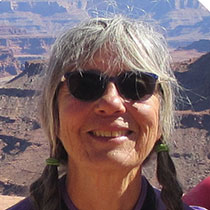
Slim Woodruff
View biography
Marjorie “Slim” Woodruff is a graduate of Northern Arizona University. She has worked in outdoor recreation and education for most of her adult life. Slim is a board member and outings chair for the Grand Canyon Historical Society. She is a senior instructor with the Grand Canyon Conservancy Field Institute. Living on the South Rim, her usual hangouts are inside the canyon. Her writings can be found in High Country News Writers on the Range and The Outdoor Journal.
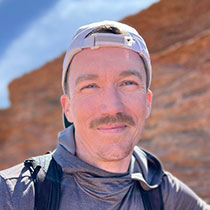
Kyle Storey
View biography
Kyle Storey is an urban planner with a passion for creating sustainable and livable communities. He possesses a love for nature and agriculture and is committed to sustainable and environmentally friendly farming practices. Kyle works towards implementing cutting-edge technologies to reduce our carbon footprint and transition towards a more sustainable future. Kyle is also a seasoned outdoor group leader who is deeply in touch with the natural world. He has led numerous outdoor adventures, from hiking and camping trips to wildlife expeditions and nature exploration.
Suggested Reading List
(10 books)
Visit the Road Scholar Bookshop
You can find many of the books we recommend at the Road Scholar store on bookshop.org, a website that supports local bookstores.
Hiking the Grand Canyon: Adventures On and Below the South Rim
Program Number: 6112
Beyond the Hundredth Meridian: John Wesley Powell and the Second Opening of the West
Here Wallace Stegner, a Pulitzer Prize-winner, gives us a thrilling account of Powell's struggle against western geography and Washington politics. We witness the successes and frustrations of Powell's distinguished career, and appreciate his unparalleled understanding of the West.
I Am the Grand Canyon: The Story of the Havasupai People
I Am the Grand Canyon is the story of the Havasupai people. From their origins among the first group of Indians to arrive in North America some 20,000 years ago to their epic struggle to regain traditional lands taken from them in the nineteenth century, the Havasupai have a long and colorful history. The story of this tiny tribe once confined to a toosmall reservation depicts a people with deep cultural ties to the land, both on their former reservation below the rim of the Grand Canyon and on the surrounding plateaus.
In the spring of 1971, the federal government proposed incorporating still more Havasupai land into Grand Canyon National Park. At hearings that spring, Havasupai Tribal Chairman Lee Marshall rose to speak. "I heard all you people talking about the Grand Canyon," he said. "Well, you're looking at it. I am the Grand Canyon!" Marshall made it clear that Havasu Canyon and the surrounding plateau were critical to the survival of his people; his speech laid the foundation for the return of thousands of acres of Havasupai land in 1975.
I Am the Grand Canyon is the story of a heroic people who refused to back down when facing overwhelming odds. They won, and today the Havasupai way of life quietly continues in the Grand Canyon and on the surrounding plateaus.
An Introduction to Grand Canyon Prehistory
People have inhabited Grand Canyon for the past twelve thousand years. Evidence of their lives exists throughout the canyon; but it is up to their ancestors and archaeologists to interpret those remains for us. This book provides a popular look at the architecture, art, and tools of prehistoric Puebloan peoples, as well as information about modern-day Native American tribes.
Down the Great Unknown: John Wesley Powell's 1869 Journey of Discovery and Tragedy Through the Grand Canyon
On May 24, 1869 a one-armed Civil War veteran, John Wesley Powell and a ragtag band of nine mountain men embarked on the last great quest in the American West. The Grand Canyon, not explored before, was as mysterious as Atlantis—and as perilous. The ten men set out from Green River Station, Wyoming Territory down the Colorado in four wooden rowboats. Ninety-nine days later, six half-starved wretches came ashore near Callville, Arizona.
Lewis and Clark opened the West in 1803, six decades later Powell and his scruffy band aimed to resolve the West’s last mystery. A brilliant narrative, a thrilling journey, a cast of memorable heroes—all these mark Down the Great Unknown, the true story of the last epic adventure on American soil.
Carving Grand Canyon: Evidence, Theories, and Mystery
Ranney explains how rivers in general can physically carve canyons, looks chronologically at the numerous theories that have been presented by successive generations of geologists regarding the Grand Canyon's formation, and describes a plausible sequence of geologic events that could create such a landscape. Numerous color photographs, detailed illustrations, and maps are provided.
The Emerald Mile: The Epic Story of the Fastest Ride in History Through the Heart of the Grand Canyon
In the spring of 1983, massive flooding along the length of the Colorado River confronted a team of engineers at the Glen Canyon Dam with an unprecedented emergency that may have resulted in the most catastrophic dam failure in history. In the midst of this crisis, the decision to launch a small wooden dory named “The Emerald Mile” at the head of the Grand Canyon, just fifteen miles downstream from the Glen Canyon Dam, seemed not just odd, but downright suicidal.
The Emerald Mile, at one time slated to be destroyed, was rescued and brought back to life by Kenton Grua, the man at the oars, who intended to use this flood as a kind of hydraulic sling-shot. The goal was to nail the all-time record for the fastest boat ever propelled—by oar, by motor, or by the grace of God himself—down the entire length of the Colorado River from Lee’s Ferry to Lake Mead. Did he survive? Just barely. Now, this remarkable, epic feat unfolds here, in The Emerald Mile.
Life in Stone: Fossils of the Colorado Plateau
Like pages in a book, the layers of sedimentary rock that are exposed on the Colorado Plateau tell us much about the diversity of environments that have come and gone over a period of hundreds of millions of years. This region is recognized as one of the finest earth-science laboratories in the world. Analysis of the fossil record and new discoveries across the plateau are answering questions, solving mysteries, and making connections that help us understand the history of life worldwide. "Life In Stone" tells the story of past environments and current discoveries with numerous illustrations and lively text written for a general audience.
Introduction to Grand Canyon Geology
This overview of Grand Canyon geology is perfect for the first-time visitor or the seasoned Grand Canyon traveler. Chapters cover the basic principles of geology, the history of geological exploration at Grand Canyon, the canyon's structural features, and the Colorado River. Includes over 70 photos and illustrations, an index, and glossary.
Living at the Edge: Explorers, Exploiters, and Settlers of the Grand Canyon Region
A comprehensive look at the pioneer history of the Grand Canyon Region, from its earliest residents to the creation of the national park at the end of the pioneer era (circa 1920). Included are close to two hundred historic photographs, many never published before, and 12 custom maps of the region.
A Field Guide to the Grand Canyon
This book describes and illustrates the area's plants and animals, and offers fascinating in-depth information on the natural history and geology of this dramatic region.
Recommended For You


